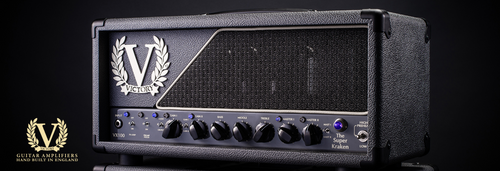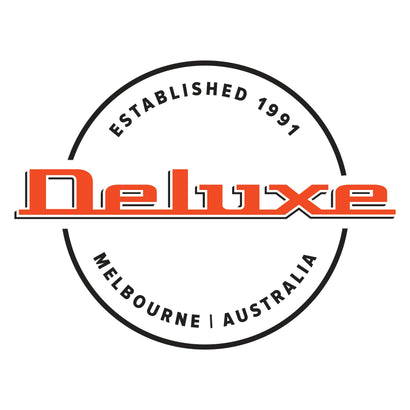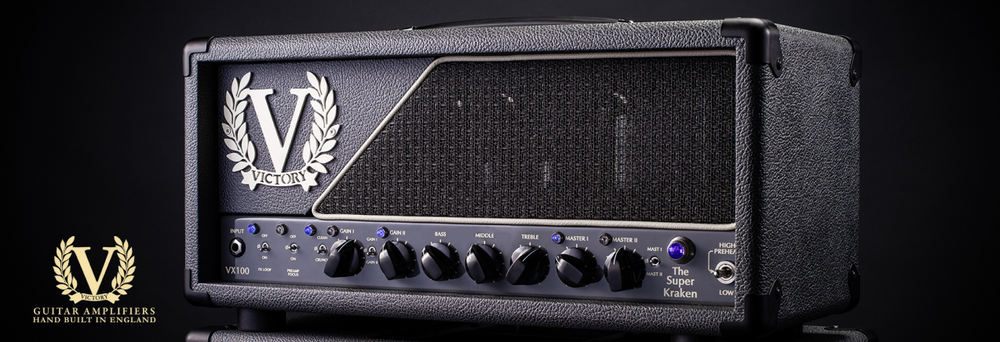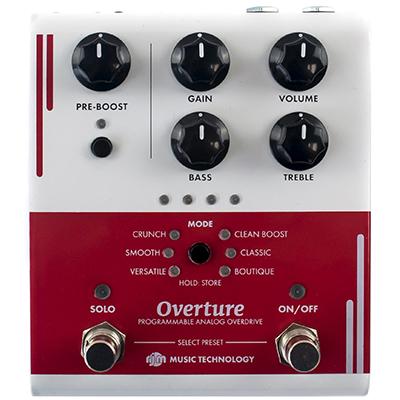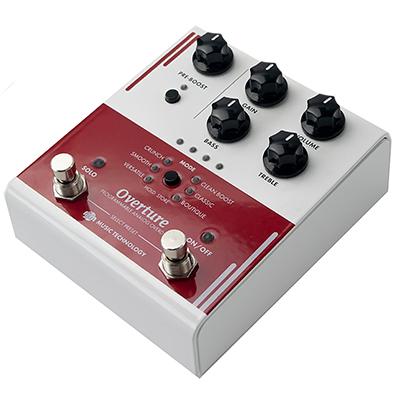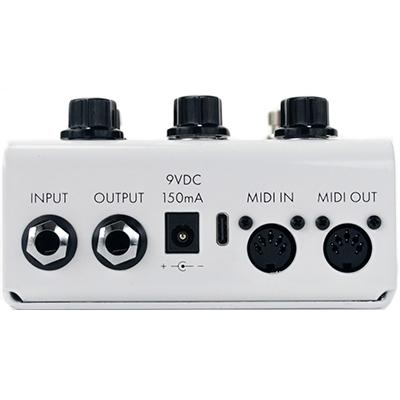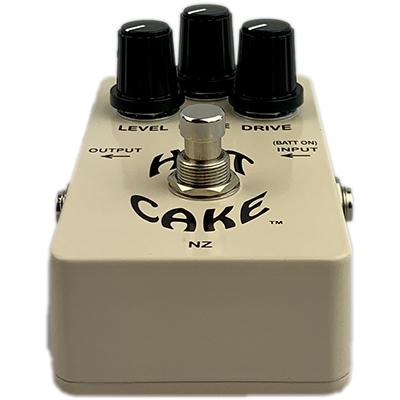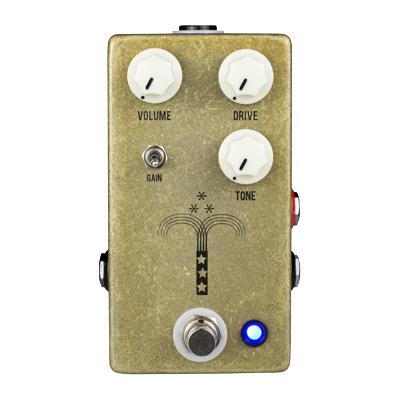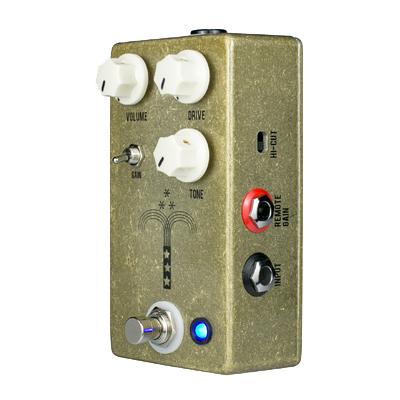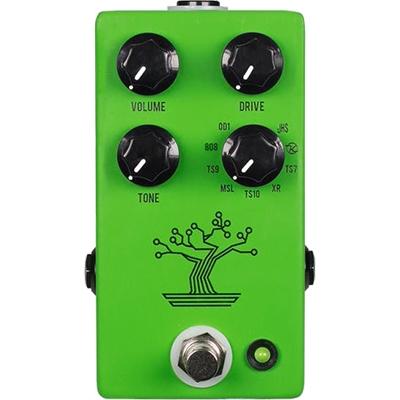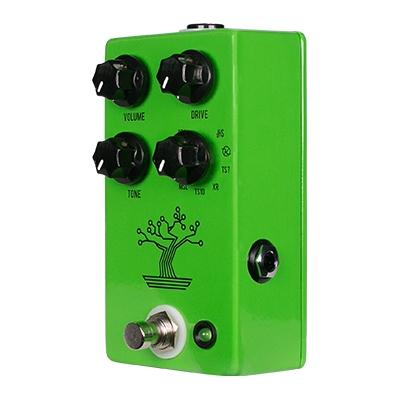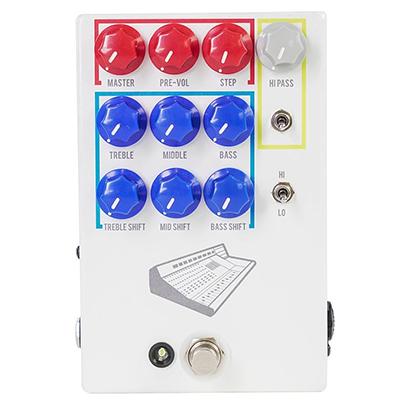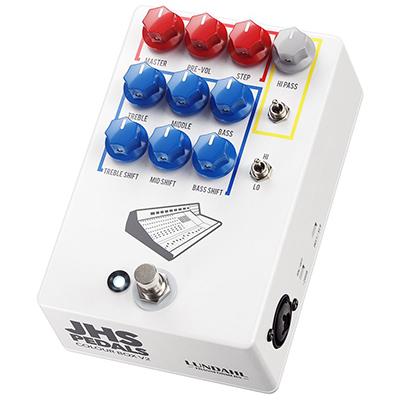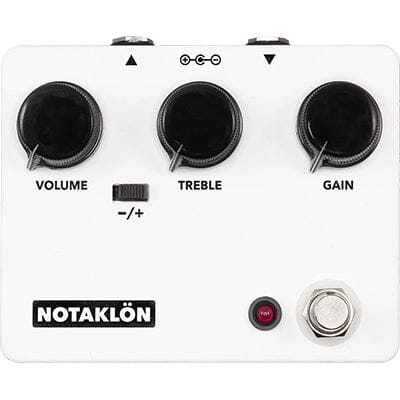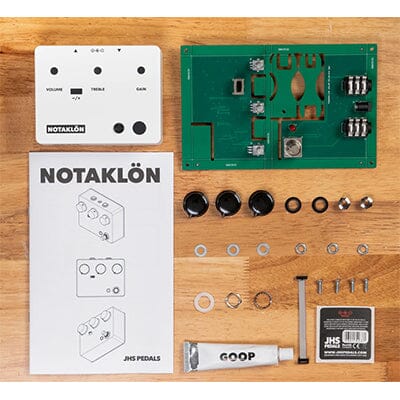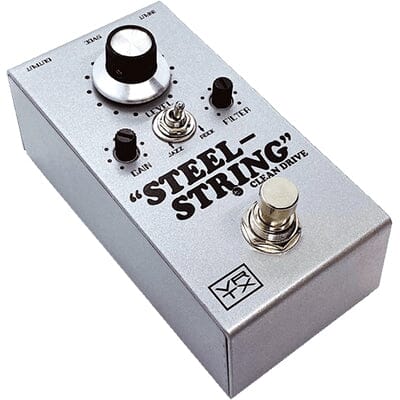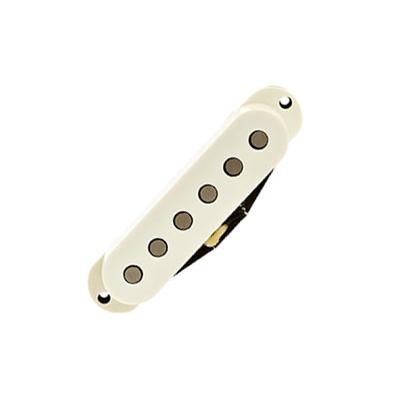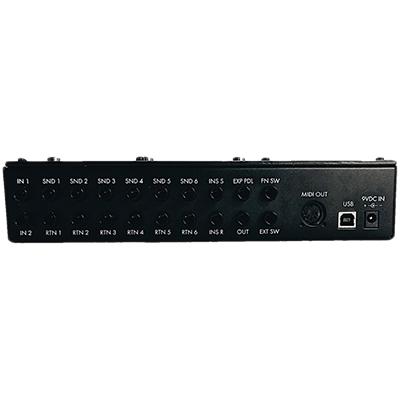Your Cart is Empty
- 100% analog signal path
- 6 overdrive modes (Clean Boost, Classic, Boutique, Versatile, Smooth, Crunch)
- Pre-boost circuit with up to 12dB available boost
- 8 user-programmable presets (100 when used with a MIDI controller)
- Comprehensive MIDI capabilities
- 5-pin MIDI In and Output jacks
- USB-C connector for direct connection to a computer
Specifications
- Pre-boost circuit can be added to provide up to 12dB boost in front of the overdrive circuit.
- 8 presets accessible from the pedal itself (4 main presets, 4 solo presets)
- 100 presets available using a MIDI controller
- Responds to both MIDI PC and CC messages
- 1/4″ mono unbalanced audio input and output
- 5-pin MIDI input and output, bidirectional when used with compatible equipment
- USB-C connector for connection to phone, tablet or computer. Appears as a standard MIDI device in MIDI enabled apps
- Power Requirements: 9VDC power supply capable of providing 150mA or more current
- BOSS-type power connector, 5.5mm/2.1mm barrel connector, center negative
- Dimensions: 4.4 (w) x 5.25 (d) x 2.4 (h) inches (11.1 (w) x 13.3 (d) x 6.1 (h) cm)
- Weight: 1.1 lbs / 0.5 kg
- Made in USA
Overdrive Modes
The Overture has six overdrive modes:
Clean Boost – This mode, an RJM original, offers boost up to a light overdrive. It has the highest maximum output level of all of the modes, and is excellent at pushing an amp into overdrive. Both Bass and Treble controls are active in this mode.
Classic – A tribute to what is arguably the most popular overdrive ever made. It can be smooth or a little aggressive, with a prominent midrange emphasis. This mode has the lowest output level of all the modes, but it’s still plenty for almost any purpose. The Bass control isn’t active in this mode.
Boutique – Based on the a boutique version of the classic. This mode is much less compressed and has somewhat less midrange focus. It has a “leaner” and more open sound. The Bass control isn’t active in this mode.
Versatile – Based on another, more extensive modification of the classic circuit, this one has a flatter frequency response compared to the other modes and offers a wider range of tones than the previous two modes thanks to the Bass control.
Smooth – This mode combines fairly high headroom with a special MOSFET clipping circuit that produces a more saturated sound, similar to some cascaded gain amps. The Bass control operates differently in this mode, adjusting both bass and treble at the same time and changing the overall voice of the overdrive.
Crunch – The last mode, another RJM original, adds some hard clipping and more aggressive midrange, allowing it to get into harder rock territory. Both Treble and Bass controls are active in this mode.

